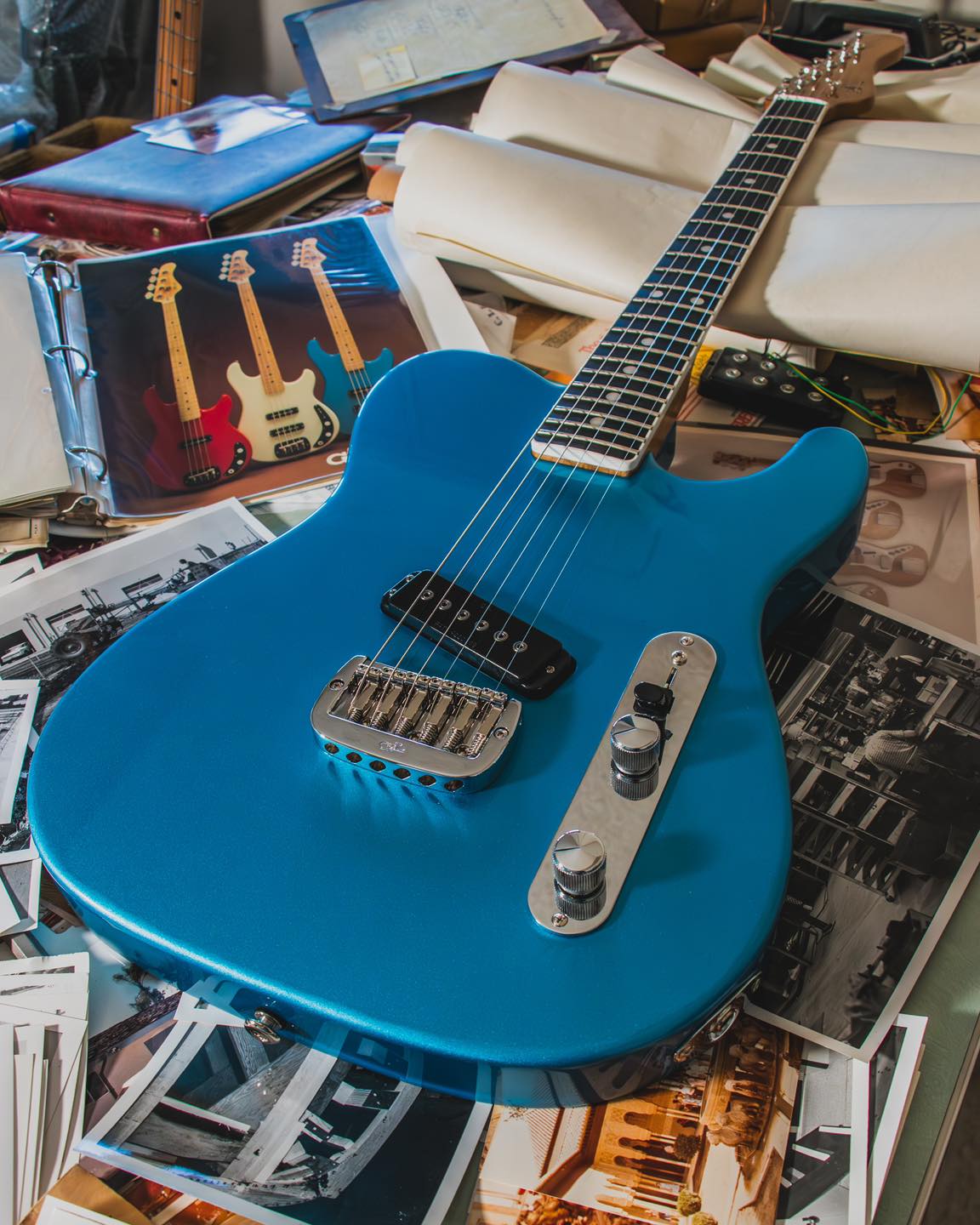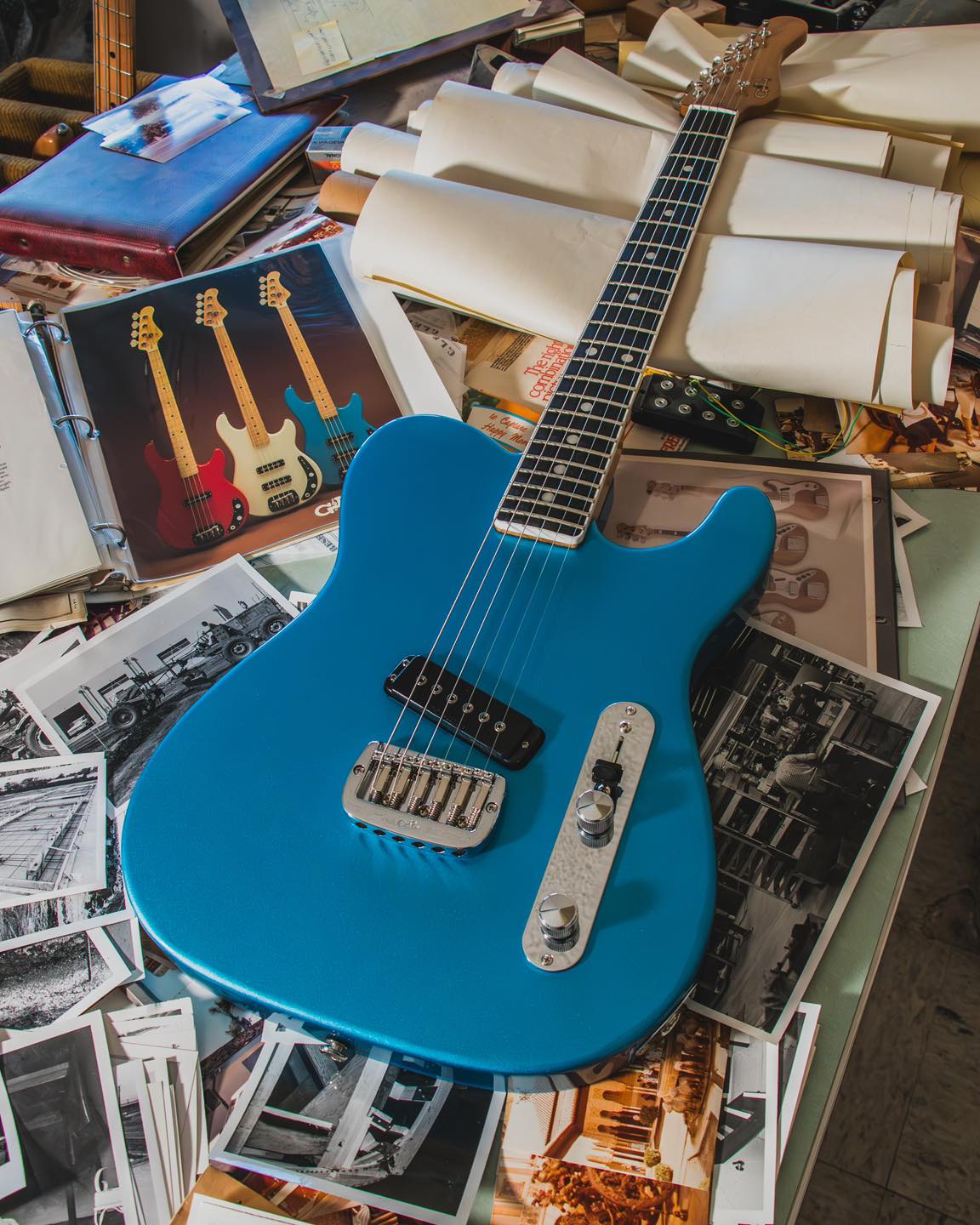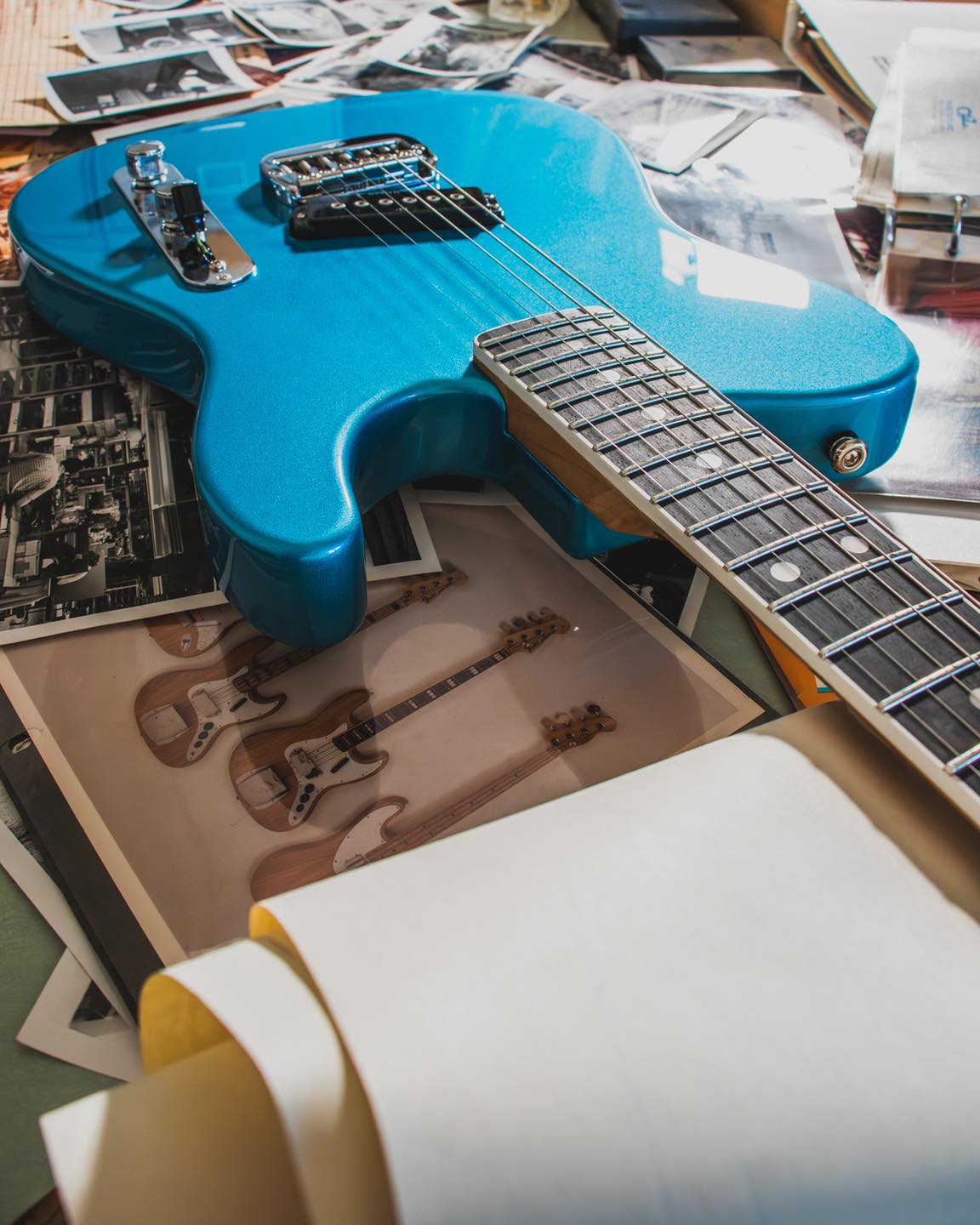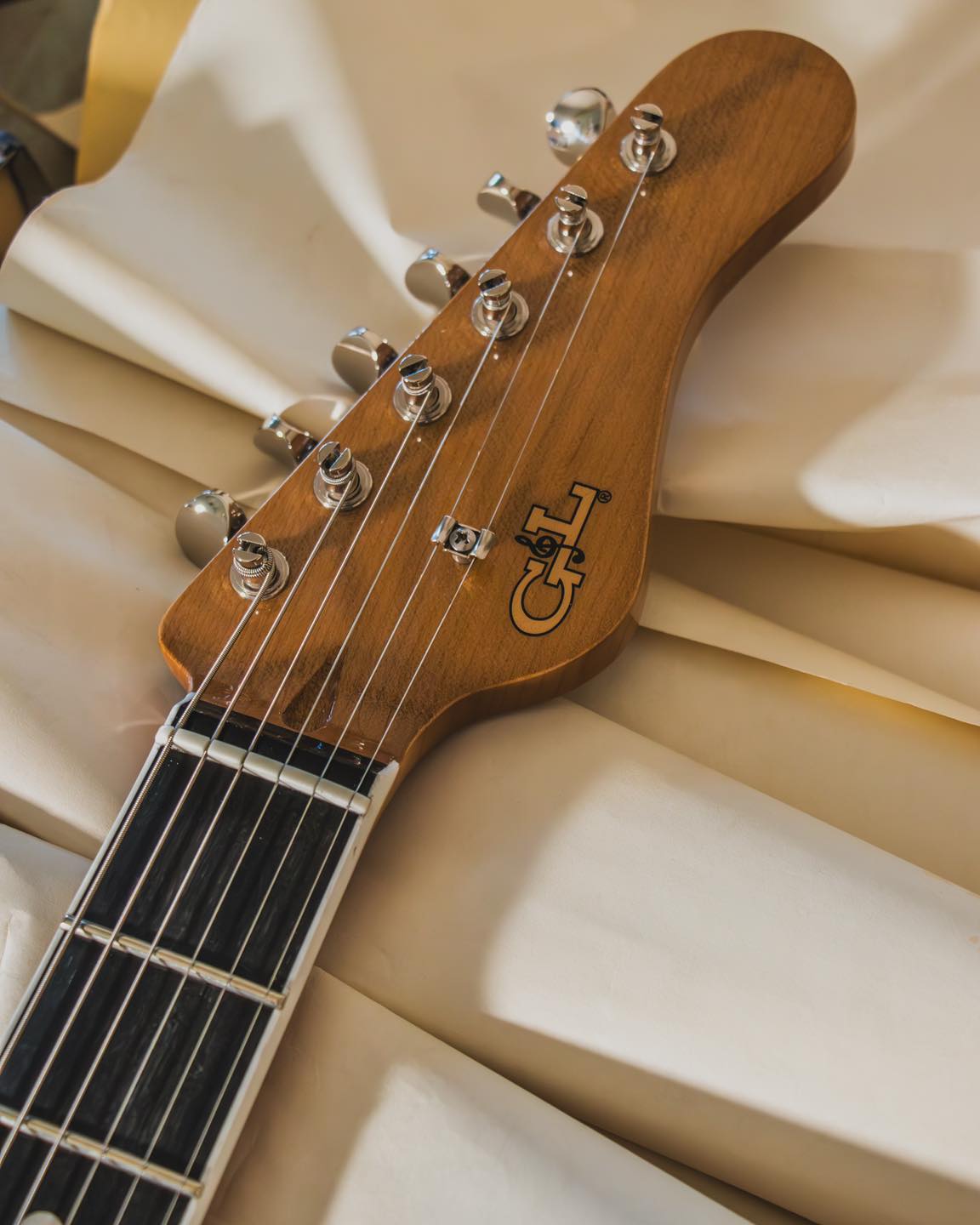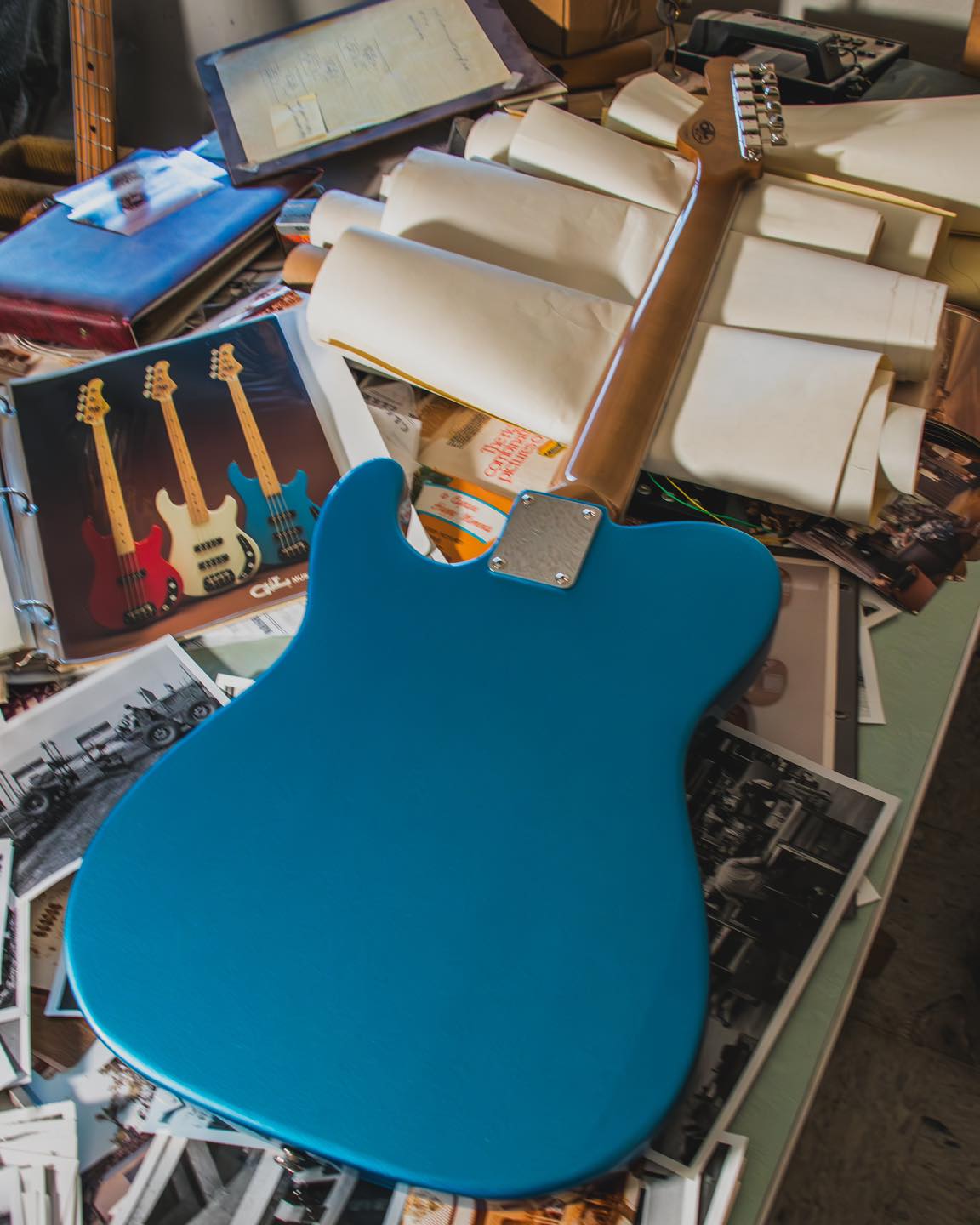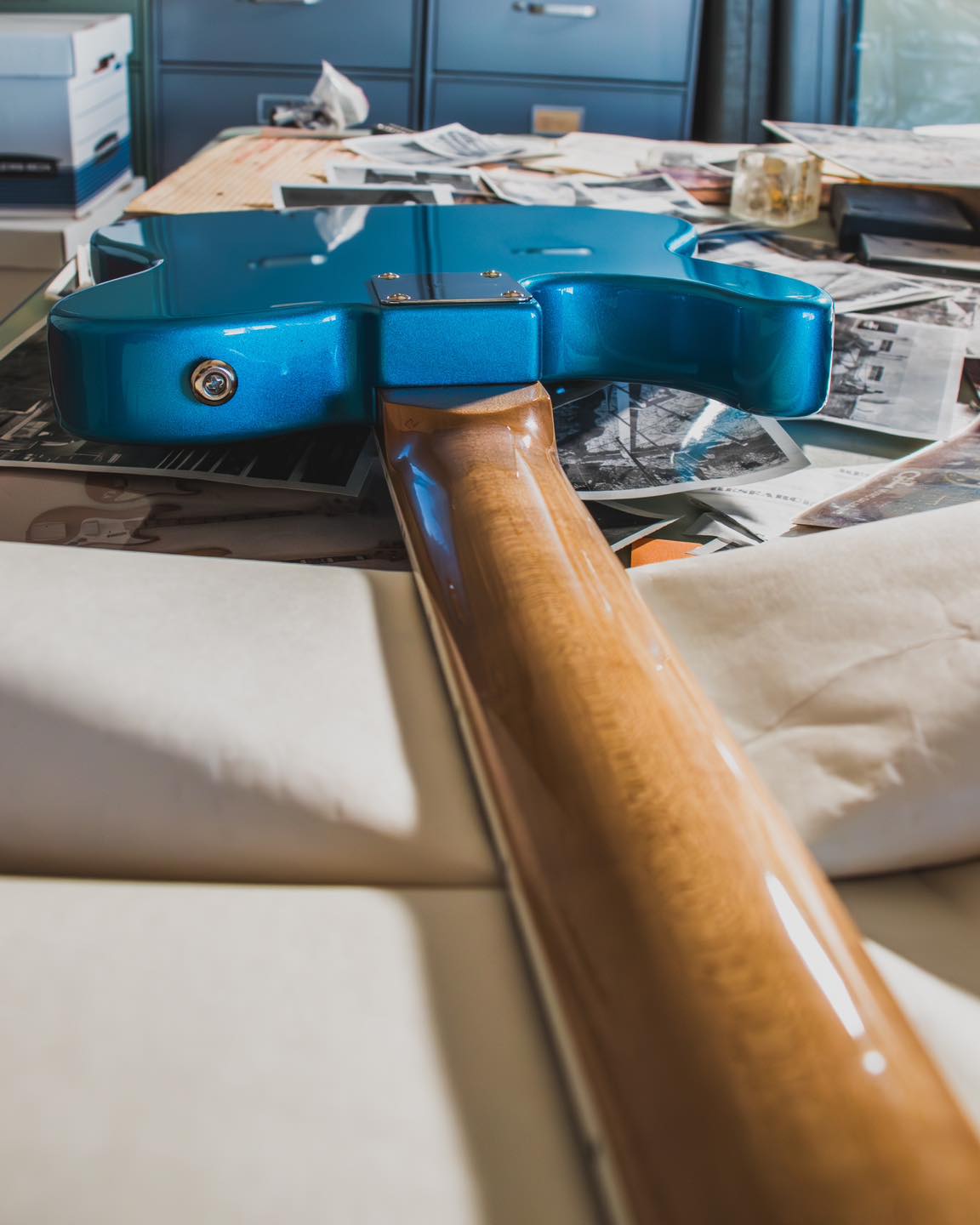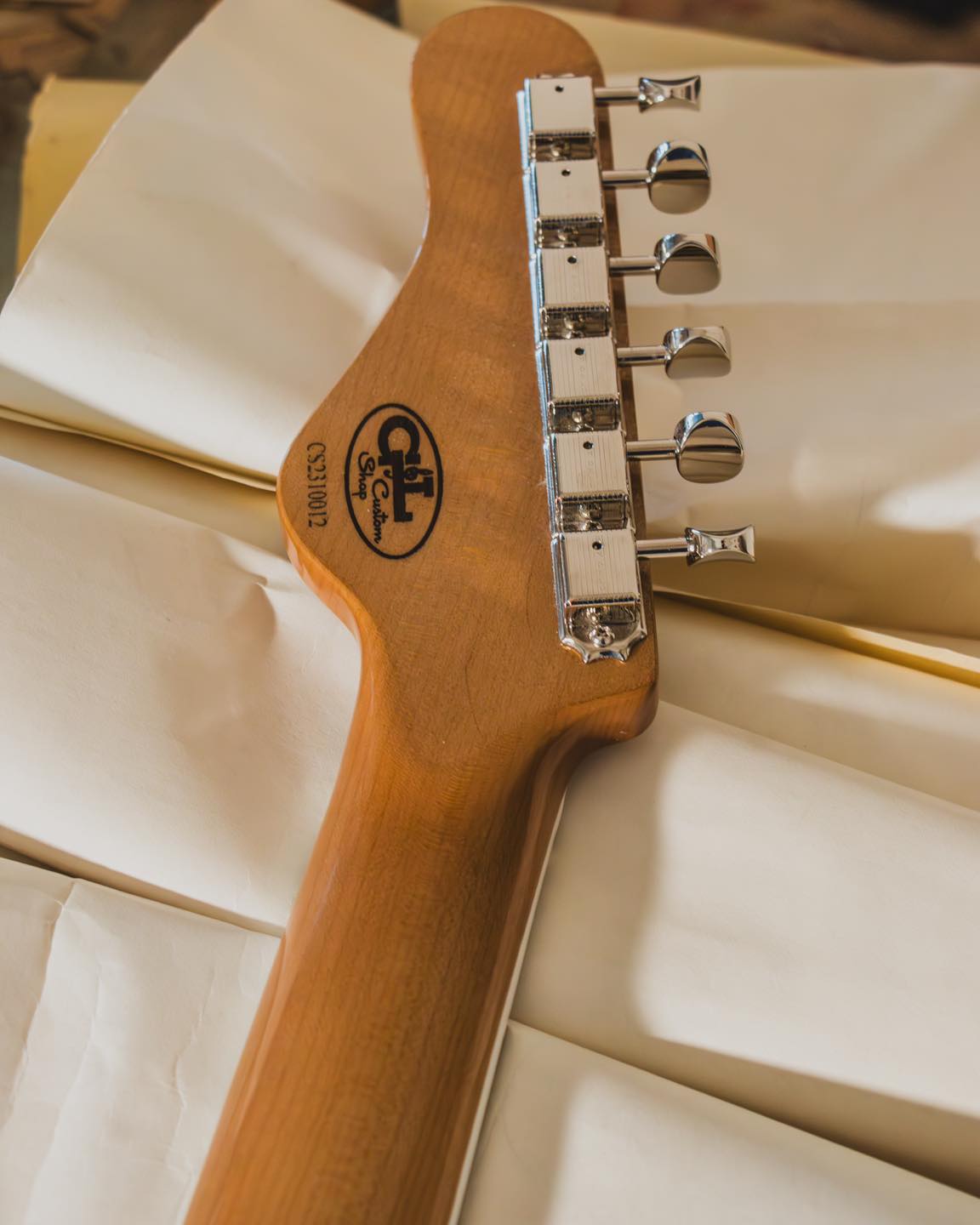SUaPYG wrote: ↑Sun Dec 29, 2024 8:58 am
Is the pickup a humbucker? The only reason I ask is because it would seem pointless to have a selector switch if the pup was a single coil. I am thinking the selector switch might be used to split the coil.
It's kinda funny how many folks forget about Fender Esquires.
A selector switch on a single pickup tele style body is nothing new. When we build these, we're recalling old-school Leo design. Have a look at some of the earliest Telecaster models Leo build back in the late 40's and early 50's. Not uncommon to see single pickup guitars with a switch.
For the uninitiated, the selector switch functions as follows:
Position 1: Pickup and Volume control, to the output jack. Tone can be moved, but nothing changes, it's bypassed.
Position 2: Pickup, Volume, and introduction of the tone control into the circuit. You can use this to roll the tone off slightly to a subtly more warm sound compared to the full bore brightness of the bridge pickup with no tone cap, and the selector switch allows this to be a "set it and forget it" kind of thing. You can easily switch back and forth between the two tones.
Position 3: Mud circuit. Tone is again bypassed, and your signal is instead filtered through a much darker capacitor, which will sound like a tone rolled all the way off, and then some.
Think of it as a very early "rhythm/lead" circuit. You can get a lot of mileage out of a single pickup guitar this way, especially in the context of the way music was played back in the 50's. Lead tones tended to be played on a full-volume, brighter bridge pickup. Rhythm tones tended to be played on a rolled off neck pickup that was softer and laid back in the mix of the band. The Esquire circuit accomplishes this same thing with a single pickup. The 3-way switch allows you to dial in 3 distinct sounds without having to touch any of the knobs or any amp settings.
